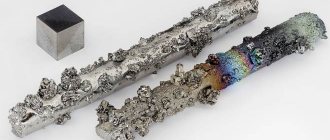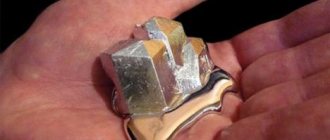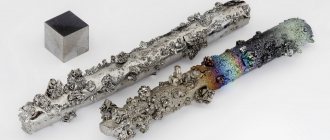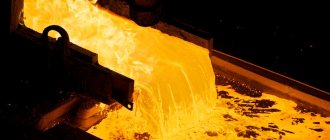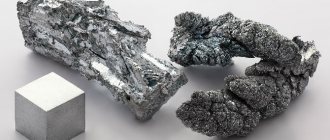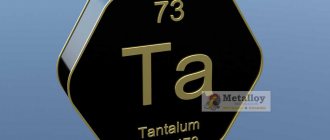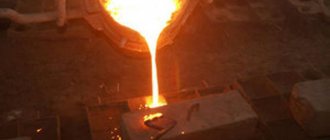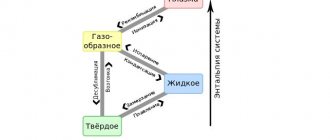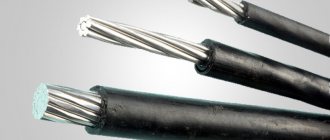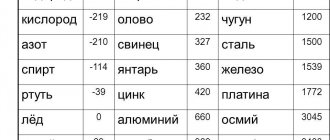Tungsten-nickel-iron
Tungsten alloys
Tungsten-nickel-copper
Tungsten alloys
Tungsten-Molybdenum alloys
Tungsten Alloys
Today, tungsten alloys are heavy, refractory metal-based alloys that are widely used in many industries. The catalog contains standard common brands. It is possible to order semi-finished products (powder, granules, ingots, pieces, etc.) or products and parts ready for use or assembly of machines, equipment, and installations for various purposes.
Main characteristics
As the most refractory metal, tungsten has specific properties:
- The melting point of tungsten is approximately the same as the temperature of the solar corona - 3422 °C.
- At the same time, the density of pure tungsten puts it on par with the densest metals. Its density is almost equal to that of gold - 19.25 g/cm3.
- The thermal conductivity of tungsten depends on temperature and ranges from 0.31 cal/cm·sec·°С at 20°С to 0.26 cal/cm·sec·°С at 1300°С.
- The heat capacity is also close to gold and amounts to 0.15·103 J/(kg·K).
The metal has a body-centered cubic crystal lattice. Despite its high hardness, tungsten in a heated state is very ductile and malleable, which makes it possible to make thin wire from it, which has wide applications.
Tungsten wire
It has a silver-gray color that does not change in the open air, since tungsten has high chemical resistance, and it reacts with oxygen only at temperatures above red heat.
The chemical properties of an element usually begin to appear when heated above several hundred degrees. Under normal conditions, it does not react with most known acids, except for a mixture of hydrofluoric and nitric acids. In the presence of certain oxidizing agents, it can react with alkali melts. In this case, to start the reaction, heating to a temperature of 400 - 500 ° C is required, and then the reaction proceeds violently, with the release of heat.
Some compounds, especially tungsten carbide, have very high hardness and are used in metallurgical production for processing hard alloys.
The given characteristics of tungsten determine the specific areas of application of the metal, both in its pure form and as part of various alloys and chemical compounds. Tungsten is included in many heat-resistant alloys as an alloying additive to increase hardness, melting point and corrosion resistance. The similarity of the density and heat capacity of tungsten and gold can theoretically serve to counterfeit gold bars, but this can easily be detected by measuring electrical resistance and by remelting the gold bar.
Tungsten
| Color: White or silver metal | Density: 19.3 g/cm³ |
| Melting point: 3380 °C | Specific heat of fusion: 191 kJ/kg |
| Boiling point: 5555 °C | Specific heat of evaporation: 4.482 MJ/kg |
| Brinell hardness: 488 kgf/mm² | Young's modulus: |
| Electrical conductivity: 55·10−9 Ohm m | Thermal conductivity: 173 W/(m K) |
| Atomic number of aluminum: 74 | Atomic mass: 183,84 |
Tungsten is a refractory metal that is relatively rare in the earth's crust.
Thus, the content in the earth's crust (in %) of tungsten is approximately 10-5, rhenium 10-7, molybdenum 3•10-4, niobium 10-3, tantalum 2•10-4 and vanadium 1.5•10-2. Refractory metals are transition elements and are located in groups IV, V, VI and VII (subgroup A) of the periodic table of elements. As the atomic number increases, the melting point of refractory metals in each of the subgroups increases.
The elements of the VA and VIA groups (vanadium, niobium, tantalum, chromium, molybdenum and tungsten) are refractory metals with a body-centered cubic lattice, unlike other refractory metals that have a face-centered and hexagonal close-packed structure.
It is known that the main factor determining the crystal structure and physical properties of metals and alloys is the nature of their interatomic bonds. Refractory metals are characterized by high interatomic bond strength and, as a consequence, high melting point, increased mechanical strength and significant electrical resistance.
The ability to study metals using electron microscopy makes it possible to study the structural features of the atomic scale, reveals the relationships between mechanical properties and dislocations, stacking faults, etc. The data obtained show that the characteristic physical properties that distinguish refractory metals from ordinary ones are determined by the electronic structure of their atoms. Electrons can move from one atom to another to varying degrees, and the type of transition corresponds to a certain type of interatomic bond. The peculiarity of the electronic structure determines the high level of interatomic forces (bonds), high melting point, strength of metals and their interaction with other elements and interstitial impurities. In tungsten, the chemically active shell in terms of energy level includes electrons 5 d and 6 s.
Of the refractory metals, tungsten has the highest density - 19.3 g/cm3. Although, when used in structures, the high density of tungsten can be considered a negative indicator, yet the increased strength at high temperatures makes it possible to reduce the weight of tungsten products by reducing their size.
The density of refractory metals largely depends on their condition. For example, the density of a sintered tungsten rod ranges from 17.0-18.0 g/cm3, and the density of a forged rod with a degree of deformation of 75% is 18.6-19.2 g/cm3. The same is observed with molybdenum: the sintered rod has a density of 9.2-9.8 g/cm3, forged with a degree of deformation of 75% -9.7-10.2 g/cm3 and cast 10.2 g/cm3.
Some physical properties of tungsten, tantalum, molybdenum and niobium are given in table for comparison. 1. The thermal conductivity of tungsten is less than half that of copper, but it is much higher than that of iron or nickel.
Table 1
| Properties | Metals | |||
| Tungsten | Tantalum | Molybdenum | Niobium | |
| Melting point, °C | 3410 | 2996 | 2610 | 2468 |
| Boiling point, °C | 5900 | 5425 | 5560 | 4927 |
| Density, g/cm3 | 19,3 | 16,6 | 10,22 | 8,57 |
| Specific heat capacity, cal/(g•°C) | 0,023 | 0,033 | 0,06 | 0,0645 |
| Specific thermal conductivity, cal/(cm ✕ s • °C) | 0,4 | 0,13 | 0,346 | 0,151 |
| Coefficient of thermal linear expansion (20÷100°C) ✕ 10-6 deg-1 | 4,44 | 6,5 | 4,9 | 7,1 |
| Electrical resistivity, cm•Ohm•10-6 | 5,5 | 13,5 | 5,17 | 15,2 |
| Modulus of elasticity, kgf/mm2 | 41500 | 18980 | 33000 | 10600 |
| Hardness, kgf/mm2 | 350 | 125 | 140 | 110 |
| Tensile strength, kgf/mm2 | 110-150 | 25-35 | 80-90 | 30-40 |
| Relative extension, % | 1 | 40 | 10-15 | 25-40 |
| Relative narrowing, % | — | 80 | — | 71 |
| Absorption cross section for thermal neutrons by nuclei, 1028 m2 | 19,2 | 21 | 2,4 | 1,1 |
| Temperature of transition to the superconducting state, K | 0,5 | 4,4 | 0,9-0,98 | — |
| Electron work function, eV | 4,5 | 4,12 | 4,33 | 3,99 |
| Density at melting point, g/cm3 | 16,65 | — | 9,1 | 7,6 |
| Fluidity, mm | 100 | — | 120-160 | 280-330 |
| Surface tension, dynes/cm | 2300 | 2000 | 2100 | 1950 |
| Microhardness (at 25°C), mN/m2 | 3430 | — | — | — |
| Yield strength (at 25°C), mN/m2 | 700-1460 | — | — | — |
Refractory metals of groups VA, VIA, VIIA of the periodic table of elements have a lower coefficient of linear expansion compared to other elements. Tungsten has the lowest coefficient of linear expansion, which indicates the high stability of its atomic lattice and is a unique property of this metal.
Tungsten has a thermal conductivity that is approximately 3 times less than that of annealed copper, but it is higher than that of iron, platinum and phosphorite bronze.
For metallurgy, the density of the metal in the liquid state is of great importance, since this characteristic determines the speed of movement through the channels, the process of removing gaseous and non-metallic inclusions and affects the formation of shrinkage cavities and porosity in the ingots. For tungsten this value is higher than for other refractory metals. However, another physical characteristic - the surface tension of liquid refractory metals at the melting temperature - differs less (see Table 1). Knowledge of this physical characteristic is necessary in processes such as the application of protective coatings, impregnation, melting and casting.
An important casting property of metal is fluidity. If for all metals this value is determined by pouring liquid metal into a spiral mold at a pouring temperature 100-200 ° C higher than the melting point, then the fluidity of tungsten is obtained by extrapolating the empirical dependence of this value on the heat of fusion.
Tungsten is stable in various gas environments, acids and some molten metals. At room temperature, tungsten does not interact with hydrochloric, sulfuric and phosphoric acids, is not affected by dissolved nitric acid, and reacts to a mixture of nitric and hydrofluoric acids to a lesser extent than molybdenum. Tungsten has high corrosion resistance in the environment of some alkalis, for example in the environment of sodium and potassium hydroxide, in which it is resistant up to a temperature of 550 ° C. When exposed to molten sodium, it is stable up to 900 ° C, mercury - up to 600 ° C, gallium up to 800 and bismuth up to 980° C. The corrosion rate in these liquid metals does not exceed 0.025 mm/year. At a temperature of 400-490° C, tungsten begins to oxidize in air and oxygen. A weak reaction occurs when heated to 100°C in hydrochloric, nitric and hydrofluoric acids. In a mixture of hydrofluoric and nitric acids, tungsten quickly dissolves. Interaction with gaseous media begins at temperatures (°C): with chlorine 250, with fluorine 20. In carbon dioxide, tungsten is oxidized at 1200°C, in ammonia the reaction does not occur.
The pattern of oxidation of refractory metals is determined mainly by temperature. Tungsten has a parabolic oxidation pattern up to 800-1000° C, and a linear pattern above 1000° C.
High corrosion resistance in liquid metal media (sodium, potassium, lithium, mercury) allows the use of tungsten and its alloys in power plants.
The content of impurities in tungsten of technical purity varies depending on the state of the metal. The powder contains impurities A1, C, Cr, Cu, Fe, Mg, Mn, Mo, Ni, Si, K, Na. The rod contains slightly fewer impurities.
The strength properties of tungsten depend on the condition of the material and temperature. For forged tungsten rods, the tensile strength after recrystallization varies depending on the test temperature from 141 kgf/mm2 at 20° C to 15.5 kgf/mm2 at 1370° C. Tungsten obtained by powder metallurgy when the temperature changes from 1370 to 2205° C has ?b = 22.5?6.3 kgf/mm2. The strength of tungsten especially increases during cold deformation. A wire with a diameter of 0.025 mm has a tensile strength of 427 kgf/mm2.
The hardness of deformed technically pure tungsten is HB 488, annealed HB 286. Moreover, such a high hardness is maintained up to temperatures close to the melting point, and largely depends on the purity of the metal.
The elastic modulus is approximately related to the atomic volume of the melting point
where Tmelt is the absolute melting temperature; VaT - atomic volume; K is a constant.
A distinctive feature of tungsten among metals is also its high volumetric deformation, which is determined from the expression
where E is the elastic modulus of the first kind, kgf/mm2; ?-transverse deformation coefficient.
Table 3 illustrates the change in volumetric strain for steel, cast iron and tungsten, calculated using the above expression.
Table 3
| Material | Elastic modulus E, 10-4 kgf/mm2 | Transverse strain coefficient u | Volumetric deformation, 10-4 kgf/mm2 |
| Steel | 1,9-2,2 | 0,23-0,29 | 0,88 |
| Cast iron | 1,3-1,7 | 0,23-0,27 | 0,61 |
| White cast iron | 1,7 | 0,23-0,27 | 0,68 |
| Tungsten | 3,9-4,07 | 0,3 | 2,31 |
The plasticity of commercially pure tungsten at 20°C is less than 1% and increases after zone electron beam purification from impurities, as well as when doping it with the addition of 2% thorium oxide. With increasing temperature, ductility increases.
The high energy of interatomic bonds of metals of groups IV, V, VIA determines their high strength at room and elevated temperatures. The mechanical properties of refractory metals significantly depend on their purity, methods of production, mechanical and thermal treatment, type of semi-finished products and other factors. Most of the information about the mechanical properties of refractory metals published in the literature was obtained on insufficiently pure metals, since melting under vacuum conditions began to be used relatively recently.
A comparison of the mechanical properties of tungsten after arc melting and tungsten obtained by powder metallurgy shows that although their tensile strength differs slightly, tungsten from arc melting turns out to be more ductile.
The Brinell hardness of tungsten in the form of a sintered rod is HB 200-250, and the rolled cold-worked sheet is HB 450-500, the hardness of molybdenum is HB 150-160 and HB 240-250, respectively.
Alloying of tungsten is carried out in order to increase its ductility; for this purpose, first of all, substitution elements are used. Increasing attention is being paid to attempts to increase the ductility of Group VIA metals by adding small amounts of Group VII and VIII elements. The increase in ductility is explained by the fact that when alloying transition metals with additives, a non-uniform electron density is created in the alloy due to the localization of electrons of the alloying elements. In this case, the atom of the alloying element changes the interatomic bond forces in the adjacent volume of the solvent; the extent of such a volume should depend on the electronic structure of the alloying and alloyed metals.
The difficulty in creating tungsten alloys is that it has not yet been possible to ensure the necessary ductility while increasing strength. The mechanical properties of tungsten alloys alloyed with molybdenum, tantalum, niobium and thorium oxide (during short-term tests) are given in Table. 4.
Table 4
| Alloy | σb • kgf/mm2, at temperature, °С | |||
| 1370 | 1650 | 1930 | 2200 | |
| W-0.5% Mo | 26,5 | — | 6,3 | 4,6 |
| W-2.5% Mo | 34,2 | 20,7 | — | — |
| W-5% Mo | — | 17,5 | 7 | 4 |
| W-10% Mo | — | 10,6 | 7,7 | 4,5 |
| W-15% Mo | — | 17,5 | 9,4 | 4,9 |
| W-25% Mo | 34 | 22,2 | 8,4 | — |
| W-0.5% Nb | — | 24,5 | 7,7 | — |
| W-0.64% Nb | — | 20,7 | 8,3 | — |
| W-1.3% Nb | — | 26 | 10 | — |
| W-2% Nb | — | 23,4 | — | — |
| W-1.6% Ta | — | 14,1 | 9,7 | 3.1 at 2065°C |
| W-3.6% Ta | — | 35 | 11,8 | — |
| W-5.3% Ta | — | 39,2 | 14 | 7,7 |
| W-1% ThO2 | 34,1 | 26 | 19,7 | 9,8 |
| W-2% ThO2 | 24,7 | 20,7 | 18,7 | 12,3 |
Alloying tungsten with molybdenum makes it possible to obtain alloys whose strength properties are superior to unalloyed tungsten up to temperatures of 2200° C (see Table 4). When the tantalum content increases from 1.6 to 3.6% at a temperature of 1650°C, the strength increases by 2.5 times. This is accompanied by a 2-fold decrease in elongation.
Precipitation-strengthened and complex-alloyed tungsten-based alloys, which contain molybdenum, niobium, hafnium, zirconium, and carbon, have been developed and are being mastered. For example, the following compositions: W - 3% Mo - 1% Nb; W - 3% Mo - 0.1% Hf; W - 3% Mo - 0.05% Zr; W - 0.07% Zr - 0.004% B; W - 25% Mo - 0.11% Zr - 0.05% C.
Alloy W - 0.48% Zr-0.048% C has ?b = 55.2 kgf/mm2 at 1650° C and 43.8 kgf/mm2 at 1925° C.
Tungsten alloys containing thousandths of a percent of boron, tenths of a percent of zirconium, and hafnium and about 1.5% niobium have high mechanical properties. The tensile strength of these alloys at high temperatures is 54.6 kgf/mm2 at 1650° C, 23.8 kgf/mm2 at 2200° C and 4.6 kgf/mm2 at 2760° C. However, the transition temperature (about 500° C ) of such alloys from a plastic state to a brittle state is quite high.
There is information in the literature about tungsten alloys with 0.01 and 0.1% C, which are characterized by a tensile strength that is 2-3 times higher than the tensile strength of recrystallized tungsten.
Rhenium significantly increases the heat resistance of tungsten alloys (Table 5).
Table 5
| Alloy | σb • kgf/mm2, at temperature, °С | |||||
| 20 | 1000 | 1370 | 1600 | 2000 | 2500 | |
| W-3% Re | — | — | 20,4 | — | 7 | 3,3 |
| W-5% Re | 156 | 47,5 | — | — | 13,2 | — |
| W-26% Re | 125 | 63,2 | — | — | 15,8 | — |
| W-30% Re | — | — | — | 70 | 15 | — |
Tungsten and its alloys have been used for a very long time and on a large scale in electrical and vacuum technology. Tungsten and its alloys are the main material for the manufacture of filaments, electrodes, cathodes and other structural elements of powerful electric vacuum devices. High emissivity and luminous efficiency in the heated state, low vapor pressure make tungsten one of the most important materials for this industry. In electric vacuum devices for the manufacture of parts operating at low temperatures that do not undergo pre-treatment at temperatures above 300° C, pure (without additives) tungsten is used.
Additives of various elements significantly change the properties of tungsten. This makes it possible to create tungsten alloys with the required characteristics. For example, for parts of electric vacuum devices that require the use of non-sagging tungsten at temperatures up to 2900 ° C and with a high primary recrystallization temperature, alloys with silicon-alkali or aluminum additives are used. Silica-alkali and thorium additives increase the recrystallization temperature and increase the strength of tungsten at high temperatures, which makes it possible to produce parts operating at temperatures up to 2100 ° C under conditions of increased mechanical loads.
In order to increase emission properties, cathodes of electronic and gas-discharge devices, hooks and springs of generator lamps are made from tungsten with a thorium oxide additive (for example, grades VT-7, VT-10, VT-15, with a thorium oxide content of 7, 10 and 15%, respectively ).
High-temperature thermocouples are made from tungsten-rhenium alloys. Tungsten without additives, in which a high content of impurities is allowed, is used in the manufacture of cold parts of electric vacuum devices (glass bushings, traverses). It is recommended to make electrodes of flash lamps and cold cathodes of gas-discharge lamps from an alloy of tungsten with nickel and barium.
For work at temperatures above 1700° C, BB-2 (tungsten-moniobium) alloys should be used. It is interesting to note that in short-term tests, alloys with a niobium content of 0.5 to 2% have a tensile strength at 1650°C 2-2.5 times higher than unalloyed tungsten. The most durable is an alloy of tungsten with 15% molybdenum. W-Re-Th O2 alloys have good machinability compared to W - Re alloys; the addition of thorium dioxide makes processing such as turning, milling, and drilling possible.
Alloying tungsten with rhenium increases its ductility, but its strength properties become approximately the same with increasing temperature. Additions of finely dispersed oxides to tungsten alloys increase their ductility. In addition, these additives significantly improve machinability.
Tungsten alloys with rhenium (W - 3% Re; W - 5% Re; W - 25% Re) are used to measure and control temperatures up to 2480 ° C in steel production and in other types of equipment. The use of tungsten-rhenium alloys in the manufacture of anticathodes in X-ray tubes is increasing. Molybdenum anticathodes coated with this alloy operate under heavy loads and have a longer service life.
The high sensitivity of tungsten electrodes to changes in the concentration of hydrogen ions allows them to be used for potentiometric titration. Such electrodes are used to control water and various solutions. They are simple in design and have a low electrical resistance, which makes them promising for use as microelectrodes in studying the acid resistance of the near-electrode layer in electrochemical processes.
The disadvantages of tungsten are its low ductility (?<1%), high density, high thermal neutron capture cross-section, poor weldability, low scale resistance and poor machinability. However, doping it with various elements can improve these characteristics.
A number of parts for the electrical industry and engine nozzle liners are made from tungsten impregnated with copper or silver. The interaction of the refractory solid phase (tungsten) with the impregnating metal (copper or silver) is such that the mutual solubility of the metals is practically absent. The contact angles of tungsten with liquid copper and silver are quite small due to the high surface energy of tungsten, and this fact improves the penetration of silver or copper. Tungsten impregnated with silver or copper was initially produced by two methods: complete immersion of a tungsten workpiece into molten metal or partial immersion of a suspended tungsten workpiece. There are also impregnation methods using hydrostatic liquid pressure or vacuum suction.
The manufacture of electrical contacts impregnated with silver or copper from tungsten is carried out as follows. First, tungsten powder is pressed and sintered under certain technological conditions. Then the resulting workpiece is impregnated. Depending on the resulting porosity of the workpiece, the proportion of the impregnating agent changes. Thus, the copper content in tungsten can vary from 30 to 13% when the specific pressing pressure changes from 2 to 20 tf/cm2. The technology for producing impregnated materials is quite simple, economical, and the quality of such contacts is higher, since one of the components gives the material high hardness, erosion resistance, and a high melting point, and the other increases electrical conductivity.
Good results are obtained when using tungsten impregnated with copper or silver for the manufacture of nozzle liners for solid fuel engines. Increasing the properties of impregnated tungsten, such as thermal and electrical conductivity, and the coefficient of thermal expansion, significantly increases the durability of the engine. In addition, the evaporation of the impregnating metal from tungsten during engine operation has a positive effect, reducing heat flows and reducing the erosive effects of combustion products.
Tungsten powder is used in the manufacture of porous materials for parts of electrostatic ion engines. The use of tungsten for these purposes makes it possible to improve its basic characteristics.
The thermal erosion properties of nozzles made of tungsten strengthened with dispersed oxides ZrO2, MgO2, V2O3, HfO2 are increased compared to nozzles made of sintered tungsten. After appropriate preparation, galvanic coatings are applied to the tungsten surface to reduce high-temperature corrosion, for example nickel coating, which is performed in an electrolyte containing 300 g/l sodium sulfate, 37.5 g/l boric acid at a current density of 0.5-11 A/dm2 , temperature 65° C and pH = 4.
Production of tungsten
The metal does not occur in nature in its pure, native form. Most deposits are formed by oxides. The content of compounds in terms of pure metal in the ore deposit is 0.2 - 2%. Chemical resistance and high melting point allow the production of tungsten from ore only when using specific techniques.
Tungsten rods
Most methods for the industrial production of tungsten are based on the recovery of the metal from its oxide. The first stage of production consists of beneficiation of tungsten-containing ore. Leaching and reduction operations then produce WO3 oxide, which is reduced to pure metal under a hydrogen atmosphere. The process temperature is about 700 °C.
As a result of the reaction, a fine metal powder is obtained. The high melting point does not allow the metal to be formed into ingots, so tungsten powder is first pressed under high pressure and then sintered in a hydrogen environment using heating to a temperature of 1300 °C. A powerful electric current is passed through the resulting bars. As a result of the high transition resistance between the metal grains, the workpiece is heated and melted.
The resulting ingot is purified by the method of zone melting, similar to the technology for producing ultra-pure semiconductors. The production of tungsten using this technology makes it possible to obtain metal of a high degree of purity without additional cleaning operations.
In the production of alloys, all components are added before the powder pressing stage, since this is no longer possible to do later. During the process of pressing, sintering and further processing of the workpiece (pressing, rolling), a uniform distribution of impurities in the alloy is ensured.
Tungsten
Tungsten is processed at temperatures of about one and a half thousand degrees. With this heating, the metal becomes very plastic and allows forging and stamping. Thin wire for spirals of incandescent lamps is made by drawing. In this case, metal crystals are located along the wire, increasing its strength. Since high homogeneity requirements are imposed on lamp spirals, the tungsten wire is additionally subjected to electrochemical polishing operations.
Applications of tungsten
Most applications of tungsten take advantage of its high melting point, density and ductility. Tungsten is indispensable in the following areas:
- Pure tungsten is the only metal that is used in incandescent filaments of lighting lamps, radio tubes, picture tubes and other electric vacuum devices;
- In its pure form and as part of alloys, it is used in the production of cores for sub-caliber armor-piercing projectiles and bullets;
- The high density of tungsten makes it possible to manufacture rotors for small-sized gyroscopes in rocketry and spacecraft;
- Production of non-consumable electrodes for argon-arc welding;
- Tungsten radiation protection devices are more effective than traditional lead ones. The use of tungsten is economical, despite its higher cost than lead. This is due to the fact that tungsten consumption, while the technical characteristics of the product are identical, is much less.
- Tungsten products do not require corrosion protection due to their low chemical reactivity under normal temperature conditions.
Tungsten drills
Compounds of tungsten with carbon are better known as "wins". Their high hardness is used in cutting brazes of metalworking tools - cutters, drills, milling cutters. Tools with pobedite tips are used to process almost any material, from wood, where they require almost no periodic sharpening, to any type of stone. To sharpen pobedite tools, abrasives with the highest hardness are required. Diamond and CBN abrasives, which have the highest hardness among all known, fully correspond to this.
Pobedite soldering tips are attached to the working edges of the tool using copper soldering. Borax is used as a flux.
Tungsten carbide is used in jewelry, particularly rings. The high hardness of the material allows you to maintain the shine of the product throughout its entire service life.
Pobedit is made using the powder method, using cobalt for bonding with a tungsten carbide crystal.
Properties
Tungsten is a transition metal.
It has a silver-gray color. In the periodic table of Mendeleev it is located in group VI and has atomic number 74. Physical properties of the metal:
- density 19.25 g/cm3;
- crystal structure body-centered, cubic;
- paramagnetic;
- melting point 3422 °C;
- spark color - yellow, gives a bunch of short intermittent sparks;
- number of stable isotopes 4.
Some properties of tungsten are unique. Refractoriness is the hallmark of tungsten; it distinguishes it from other metals.
| Properties of the atom | |
| Name, symbol, number | Tungsten / Wolframium (W), 74 |
| Atomic mass (molar mass) | 183.84(1)[1] a. e.m. (g/mol) |
| Electronic configuration | [Xe] 4f14 5d4 6s2 |
| Atomic radius | 141 pm |
| Chemical properties | |
| Covalent radius | 170 pm |
| Ion radius | (+6e) 62 (+4e) 70 pm |
| Electronegativity | 2.3 (Pauling scale) |
| Electrode potential | W ← W3+ 0.11 V W ← W6+ 0.68 V |
| Oxidation states | 6, 5, 4, 3, 2, 0 |
| Ionization energy (first electron) | 769.7 (7.98) kJ/mol (eV) |
| Thermodynamic properties of a simple substance | |
| Density (at normal conditions) | 19.25[2] g/cm³ |
| Melting temperature | 3695 K (3422 °C, 6192 °F)[2] |
| Boiling temperature | 5828 K (5555 °C, 10031 °F)[2] |
| Ud. heat of fusion | 285.3 kJ/kg 52.31[3][4] kJ/mol |
| Ud. heat of vaporization | 4482 kJ/kg 824 kJ/mol |
| Molar heat capacity | 24.27[5] J/(K mol) |
| Molar volume | 9.53 cm³/mol |
| Crystal lattice of a simple substance | |
| Lattice structure | cubic body-centered |
| Lattice parameters | 3.160 Å |
| Debye temperature | 310K |
| Other characteristics | |
| Thermal conductivity | (300 K) 162.8[6] W/(m K) |
| CAS number | 7440-33-7 |
We recommend: RUTHENIUM - mysterious, like the Russian soul
Not proven: there is an assumption that seaborgium (an isotope is unstable, its half-life is only 0.01 seconds) is more refractory.
